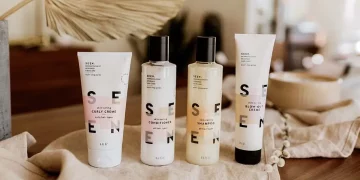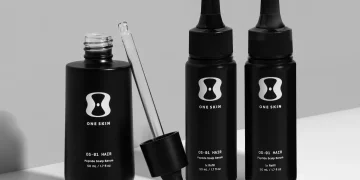The beauty industry is undergoing a long-overdue green revolution. As consumers become increasingly aware of the environmental toll of plastic waste and chemical runoff, the demand for sustainable alternatives has skyrocketed. Nowhere is this shift more palpable than in the hair care aisle, where traditional plastic bottles are being challenged by solid bars, refillable systems, and formulas born from green chemistry. But for the average consumer, a critical question remains: can these eco-conscious options truly compete with the performance of the salon-quality products we know and love? Is sustainability a compromise, or can it be a pathway to even better hair health?
This article delves deep into the science and substance behind the sustainable hair care movement. We will rigorously evaluate the performance of solid shampoo bars, explore the practicalities and innovations of refill systems, and demystify the principles of green chemistry that are creating a new generation of effective, earth-friendly formulas. The goal is to move beyond marketing claims and provide a clear-eyed assessment of whether these products can deliver on their twin promises: a lighter planetary footprint and beautiful, healthy hair.
The Solid State Revolution: Unpacking the Science of Shampoo Bars
Solid shampoo bars represent the most visible icon of the zero-waste beauty movement. By eliminating the water content and plastic packaging of traditional shampoos, they offer a dramatic reduction in carbon footprint for shipping and waste. But the transition from a liquid lather to a solid bar can be jarring, and performance has historically been inconsistent. The key to understanding their efficacy lies in their formulation chemistry.
Traditional liquid shampoos are primarily water (often up to 80%) and rely on synthetic surfactants like Sodium Lauryl Sulfate (SLS) or its slightly gentler cousin, Sodium Laureth Sulfate (SLES), to create a rich, familiar lather. Solid bars, however, must use different cleansing agents that can exist in a solid form.
The Cleansing Powerhouse:
The most effective solid bars utilize high concentrations of soap-based surfactants or syndet (synthetic detergent) bars.
- Soap-Based Bars: These are often made from saponified oils (like coconut or olive oil). While natural, they tend to be high-alkaline (with a pH of 9-10), which can disrupt the scalp’s natural acidic mantle (pH 4.5-5.5). This can lead to cuticle lifting, resulting in hair that feels rough, frizzy, and tangled, especially for those with color-treated, curly, or dry hair.
- Syndet Bars: This is where modern green chemistry shines. Syndet bars are crafted from blended solid surfactants like Sodium Cocoyl Isethionate (SCI) and Cocamidopropyl Betaine. SCI is a mild, high-foaming surfactant derived from coconut oil. Its key advantage is that it can be formulated to a pH level that is much closer to the scalp’s natural balance, preventing cuticle damage. A well-formulated syndet bar will cleanse effectively without stripping the hair, leaving it soft, manageable, and shiny.
The Performance Verdict:
The early criticism of shampoo bars leaving a “waxy” residue was often directed at soap-based formulas reacting with hard water minerals. Today’s advanced syndet bars, often labeled as “pH-balanced,” have largely overcome this issue. They can deliver a luxurious lather and a clean, residue-free feel that rivals, and in some cases surpasses, traditional liquid shampoos. For the best results, users should look for syndet-based, pH-balanced bars and may need a brief “transition period” of 1-2 weeks as the hair sheds residual silicone buildup from old products.
Closing the Loop: The Practicality and Innovation of Refill Systems
If solid bars represent a radical departure from the norm, refill systems offer a more familiar yet equally impactful sustainable model. The concept is simple: purchase a durable, beautifully designed pump bottle once, and thereafter, you purchase refills in lightweight, reduced-plastic pouches, aluminum cans, or compostable containers.
The environmental argument is powerful. Refill systems can reduce plastic packaging by 70-90% compared to a new bottle each time. But their success hinges on two factors: convenience and product preservation.
The Convenience Factor:
The refill model requires a shift in consumer habit. It demands forethought—remembering to order a refill before the bottle runs out—and a small amount of manual labor to decant the product. Brands are tackling this challenge through:
- Subscription Services: Automated deliveries ensure you never run out, seamlessly integrating the refill habit into your life.
- In-Store Refill Stations: Some grocery stores and dedicated zero-waste shops now offer bulk dispensers where you can refill your own bottle, eliminating packaging waste entirely.
The Preservation Puzzle:
A primary function of packaging is to protect the formula from air, light, and contamination, which can degrade preservatives and active ingredients. Refill pouches, while lightweight, are often single-use and difficult to recycle. The most innovative solutions are emerging here, including:
- Water-Soluble Pods: These dissolvable packets, made from polyvinyl alcohol (PVA), contain a concentrated dose of shampoo. You drop one in your existing bottle, add water, and shake. While PVA does biodegrade, it requires specific industrial composting conditions, raising questions about its end-of-life in most municipal systems.
- Concentrated Tablets: Similar to laundry detergent tabs, these solid, dehydrated tablets are activated with water in your own bottle. They represent the ultimate in shipping efficiency and waste reduction, with packaging often limited to a small, compostable pouch.

The Performance Verdict:
Refill systems have a significant advantage: the product inside is often identical to the original liquid formulation. There is no performance compromise. You get the exact same surfactants, silicones (if used), and active ingredients you know and love, with the added benefit of a dramatically reduced environmental impact. The challenge is not the product quality, but building the infrastructure and consumer habits to make refilling as easy as buying new.
The Molecular Makeover: How Green Chemistry is Formulating for the Future
At the heart of both solid bars and refill liquids is the most critical element of all: the formula itself. This is where “green chemistry” moves beyond a buzzword and becomes the engine of true sustainability. Green chemistry is a set of principles that seeks to design chemical products and processes that reduce or eliminate the use and generation of hazardous substances.
In practice, this means:
- Biodegradable Surfactants: Moving beyond petroleum-derived surfactants to those derived from renewable resources like coconut, corn, and sugar that break down quickly and safely in the environment without harming aquatic life.
- Preservative Systems: Parabens and formaldehyde-releasing preservatives have been controversial. Green chemistry favors robust, broad-spectrum alternatives like Benzoic Acid and Sorbic Acid (derived from berries), Leuconostoc/Radish Root Ferment Filtrate, and Glycerin, which are effective and have a cleaner safety profile.
- Silicone and Polymer Alternatives: While silicones like Dimethicone provide unparalleled slip and detangling, some are not biodegradable and can build up over time. Green chemistry is developing plant-derived alternatives. Amodimethicone, for instance, is a silicone that is designed to deposit selectively on damaged hair and is more readily removed, reducing buildup. Other innovations include polymers derived from cellulose and guar gum that provide conditioning benefits without ecological persistence.
- Upcycled Ingredients: The ultimate in resource efficiency, this involves using byproducts from other industries. Examples include using leftover grape seeds from winemaking, coffee grounds, or fruit pits, which are rich in antioxidants and oils, that would otherwise go to waste.
The Performance Verdict:
The narrative that “natural” or “green” ingredients are less effective is becoming obsolete. Thanks to green chemistry, brands can now create high-performance formulas that are both potent and eco-conscious. A shampoo using a gentle, biodegradable surfactant blend paired with a plant-derived preservative and upcycled botanical oils can deliver exceptional cleansing, manageability, and shine without the environmental baggage of older formulations. The result is hair that is not only beautiful but also clean in the most holistic sense.
Conclusion: Performance and Planet in Harmony
So, can eco-friendly shampoos deliver results? The evidence points to a resounding yes. The sustainable hair care movement has matured beyond its early, sometimes clumsy, iterations. Today, it is driven by:
- Technologically advanced solid bars that cleanse effectively without compromising hair or scalp health.
- Convenient and intelligent refill systems that deliver identical performance with a fraction of the waste.
- The transformative power of green chemistry, which is formulating products that are safe for our bodies and our waterways without sacrificing an ounce of performance.
The choice is no longer between sustainability and results. The new generation of eco-friendly hair care proves that we can have both. By investing in these products, we are not making a compromise; we are casting a vote for a beauty industry that is smarter, cleaner, and more responsible—one that allows us to care for our hair while genuinely caring for the planet.













































